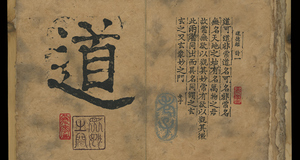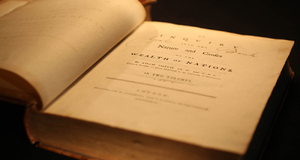Avoiding the Tyranny of Democracy: The Republican Ideal of a 'Mixed' Constitution
By
2015, Vol. 7 No. 04 | pg. 2/2 | « Examining the United States as a leading example of a modern republic will elucidate whether the republican ideals of avoiding the tyranny of democracy through a mixed constitution have been realized. The foundations of the American republic can be traced back to the works of John Adams, the author of the Constitution of the Commonwealth of Massachusetts, who formulated “the checks and balances of republican government” (Flower 2014: 405). America followed the model of the Republic of Rome in that its institutions have been “intentionally constructed with the aim of dispersing authority” (Lipson 1970: 263). The expansion of the republican model in America is seen most notably in its establishment of a new constitutional tension, that between federal and state powers (Sunstein 1988: 1581). This brought with it repeated concerns of the tyranny of the majority. As Madison notes, “repeated violations of those federal parchment barriers have been committed by overbearing majorities in every state” (Leibiger 1993: 444). He noted, as did Jefferson, the “excesses of democracy” taken by the Virginia Legislature in the years following the Declaration of Independence, stressing that “an elective despotism was not the government we fought for” (Long 1976). It was the introduction of the constitution in 1787 that was “framed by the Federal Convention for the people’s consideration and then ratified by the people of the several States through a Ratifying Convention,” that sought to address the contention (Ibid). This designed constitution making in such a way as to “establish effective constitutionally limited government” that still retained the capacity to influence states into concord with the federal constitution (Meese 1985: 455). The constitution acts to balance the interrelationship between the three branches of government, represented in the United States as executive, legislative, and judicial. In the modern American republic, government is therefore “dictated by the constitutional grant of powers to them and by the constitutional doctrine of separation of powers” (Bassiouni 2014: 69).The uniqueness of the American republican model is found in its addition of the Bill of Rights to the Constitution. This was seen to encourage a greater sense of protection within society from the tyranny capable in the absence of “equality before the law” (Abbott 1999: 303). The ability of the Bill of Rights to be amended ‘by the people, for the people,' additionally encourages the ‘checks’ required for the legally binding system to function (Weller 2013: 78). For instance, a modern concern of the American people revolves around health care provisions. According to the additional amendment made by President Franklin D. Roosevelt in 1944, that of the “Second Bill of Rights,” the right to “adequate medical care and the opportunity to achieve and enjoy good health” would be included (Roosevelt 1941: 5). Further, Representative Jesse L. Jackson Jr. introduced a more recent amendment to the US constitution ensuring the right to health care on February 14, 2011. This bill stipulated that, “all persons shall enjoy the right to health care of equal high quality” and further that “ the Congress shall have power to enforce and implement this article by appropriate legislation” (Swendiman 2012: 2). As such, while the United States works to represent the interests of the people, they are grounded in the republican ideal to pursue the ‘common good,' practically constrained by their expansion of ‘checks’ to the constitution and the ‘balances’ of the separation of powers in governmental structure. In conclusion, both historical and modern republics that are grounded in a constitutionally bound mixed government have been essentially successful in safeguarding democracy against tyranny. This has been demonstrated through an examination of both the Roman Republic and the United States which implement institutional ‘checks and balances’ against dominance of both the majority and the government. The central features of the republican model that achieve this have been analyzed as the shaping of institutions to accommodate natural class inequality and the construction of a constitution that promotes the civic duty of the citizenry to uphold law. Maintaining these features has historically balanced power in such a way as to avoid majority domination. The model must remain consistent with its ultimate goal of combining liberty with the common good of the citizenship to ensure that the government is just. Therefore, republicanism exists as arguably the best model to counteract tyranny, if the whole citizenry upholds it. ReferencesAbbott, F. M. (1999). Political Economy of NAFTA Chapter Eleven: Equality before the Law and the Boundaries of North American Integration, The.Hastings Int'l & Comp. L. Rev.,23, 303. Aristotle,The Politics, Trans. T.A. Sinclair (London: Penguin, 1992). Bassiouni, M. C. (2014).International extradition: United States law and practice. Oxford University Press. Blythe, J. M. (2014).Ideal government and the mixed constitution in the middle ages. Princeton University Press. Bohman, J. (Ed.). (1997).Deliberative democracy: Essays on reason and politics. MIT press. Brett, A. S., & Hamilton-Bleakley, H. (Eds.). (2006).Rethinking the foundations of modern political thought. Cambridge University Press. Casper, G. (1988). Essay in Separation of Powers: Some Early Versions and Practices, An.Wm. & Mary L. Rev.,30, 211. Chomsky, N. (2007).Failed states: The abuse of power and the assault on democracy. Macmillan. Churchill, W. (Ed.). (2001).The great republic: a history of America. Random House LLC. Deegan-Krause, K. (2006).Elected affinities: democracy and party competition in Slovakia and the Czech Republic. Stanford University Press. de Tocqueville, A. (1831). The Tyranny of the Majority.Richard L. Rapson. Epstein, R. A. (1988). Modern Republicanism. Or The Flight from Substance.Yale Law Journal, 1633-1650. Findlay, R. (1996). Towards a model of territorial expansion and the limits of empire.The political economy of conflict and appropriation, 41-56. Flower, H. I. (Ed.). (2014).The Cambridge companion to the Roman republic. Cambridge University Press. Gardner, J. F. (1986).Women in Roman law and society(Vol. 635). Indiana University Press. Goodhart, M. (2000). Theory in practice: Quentin Skinner's Hobbes, reconsidered.The Review of politics,62(03), 531-562. Goodin, R. E., Pettit, P., & Pogge, T. W. (Eds.). (2012).A companion to contemporary political philosophy(Vol. 105). John Wiley & Sons. Hahm, D. E. (2009). The Mixed Constitution in Greek Thought.A Companion to Greek and Roman Political Thought,32, 178. Hall, D. (1977). The Republic and the" Limits of Politics".Political Theory, 293-313. Kramnick, I. (1990). Republicanism And Bourgeois Radicalism: Political Ideology In Late Eighteenth-Century England And America Author: Isaac K. Laborde, C., & Maynor, J. (Eds.). (2009).Republicanism and political theory. John Wiley & Sons. Leibiger, S. (1993). James Madison and Amendments to the Constitution, 1787-1789:" Parchment Barriers".The Journal of Southern History, 441-468. Lipson, L. (1970).The great issues of politics: An introduction to political science. Prentice-Hall. Meese III, E. (1985). Supreme Court of the United States: Bulwark of a Limited Constitution, The.S. Tex. L. Rev.,27, 455. Paul, T. V., Wirtz, J. J., & Fortmann, M. (Eds.). (2004).Balance of power: theory and practice in the 21st century. Stanford University Press. Pettit, P. (1997).Republicanism: A Theory of Freedom and Government: A Theory of Freedom and Government. Oxford University Press. Roosevelt, F. D. (1941).Annual message to Congress(pp. 01-06). Center for Cassette Studies, no. 240. Rossiter, C. (1948).Constitutional dictatorship. Transaction Publishers. Skinner, Q. (1990). Machiavelli's Discorsi and the pre-humanist origins of republican ideas. Skinner, Q. (2002). Machiavelli on Virtù and the Maintenance of Liberty.Visions of politics,3, 160-85. Sunstein, C. R. (1988). Beyond the republican revival.Yale Law Journal, 1539-1590. Swendiman, K. S. (2012, July 9). Health Care: Constitutional Rights and Legislative Powers . Retrieved October 1, 2014 from Congressional Research Service: http://fas.org/sgp/crs/misc/R40846.pdf Swift, A. (2013).Political Philosophy. Polity. Tamanaha, B. Z. (2004). On the rule of law.History, Politics, Theory,1. Urbinati, N. (2006).Representative democracy: principles and genealogy. University of Chicago Press. Weller, J. E. (2013).Yesterday's people: Life in contemporary Appalachia. University Press of Kentucky. Wootton, D. (2006). Liberty, Metaphor, and Mechanism:“checks and balances” and the origins of modern constitutionalism.Liberty and American Experience in the Eighteenth Century. Indianapolis: Liberty Fund, 209-274. Suggested Reading from Inquiries Journal
Inquiries Journal provides undergraduate and graduate students around the world a platform for the wide dissemination of academic work over a range of core disciplines. Representing the work of students from hundreds of institutions around the globe, Inquiries Journal's large database of academic articles is completely free. Learn more | Blog | Submit Latest in Political Science |


















